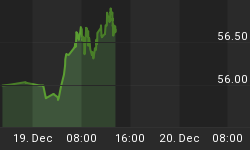It's official - China's de facto monopoly on current rare earths production is a threat to the global economy.
As least, that was the gist of hearings on 21 September by the U.S. House of Representatives Committee on Foreign Affairs Subcommittee on Asia and the Pacific.
Center for a New American Security fellow Christine Parthemore ominously intoned, "Reliable access to critical minerals is a matter of both economic and geostrategic importance to the United States. Today, no minerals are more troubling to U.S. security and foreign policy than rare earth elements. Supplies are concentrated mostly in the hands of one supplier with its own rising demand, and the United States today has no good options for recycling rare earth minerals or substituting more easily obtained minerals. Even more important to the current circumstances, the United States possess rare earth reserves that will be economical to produce, which will be an important means of mitigating the foreign policy challenge surrounding rare earths while creating domestic jobs."
Not that the West should have been blindsided, as in 1992 China's former Premier, Deng Xiaoping commented, "The Middle East has oil. China has rare earths."
In 2010 the Chinese government cut its rare earth export ceiling by 40 percent from their 2009 levels, causing prices to skyrocket, earlier this year reaching the dizzying level of over $100,000 a ton.
Japan has taken the most interesting approach to resolving the supply dilemma. While a number of Japanese companies have relocated some of their production facilities to China to avail themselves of guaranteed access and lower rare earth prices, the Japanese government just announced that it will supply about $3.9 million in a subsidy to major motor manufacturer Nidec Corp. and three other firms that are working to reduce the use of rare earths.
The obvious solution?
Dig baby dig, to paraphrase Sarah Palin.
As for the rest of the industrialized world, Molycorp, Inc. President and Chief Executive Officer Mark A. Smith told the subcommittee that his company, the Western Hemisphere's only producer of rare earth oxides and the largest rare earth oxide producer outside of China, is ramping up production at its Mountain Pass, California facility and hopes to be able to cover the bulk of U.S. rare earth usage, currently running at 15,000-18,000 tons per year, by the end of 2012.
According to a new report from Illinois-based Technology Materials Research LLC, sufficient rare earth sources exist outside China to compensate for its recent export cuts as early as 2013 for some elements. Rare earth mining is now proceeding at sites as far afield as Estonia, Mongolia, Australia and Malaysia.
Accordingly, the sudden spasms of fear in Western capitals about Chinese rare earth export policies remain largely a tempest in a teacup. The Western response in the short term should be a judicious mix of conservation and expanded production. After all, there are a number of former rare earth mine sites in the U.S. alone that were abandoned years ago as unprofitable due to low prices - at $100,000 a ton, such is obviously no longer the case.
Furthermore, some analysts believe that if the Chinese economy continues to boom, within the next several years China could itself become an importer of some of the more exotic rare earths.
As for the possibility of a nation becoming totally self-sufficient in rare earths production, we'll leave the final word to Molycorp's Smith, who told his congressional audience, "It is important to note that there may always be some rare earths that the U.S. will need to import from other nations."
Source: http://oilprice.com/Metals/Commodities/China-Japan-Minuet-Around-the-Issue-of-Rare-Earths.html
By. John C.K. Daly of Oil Price















